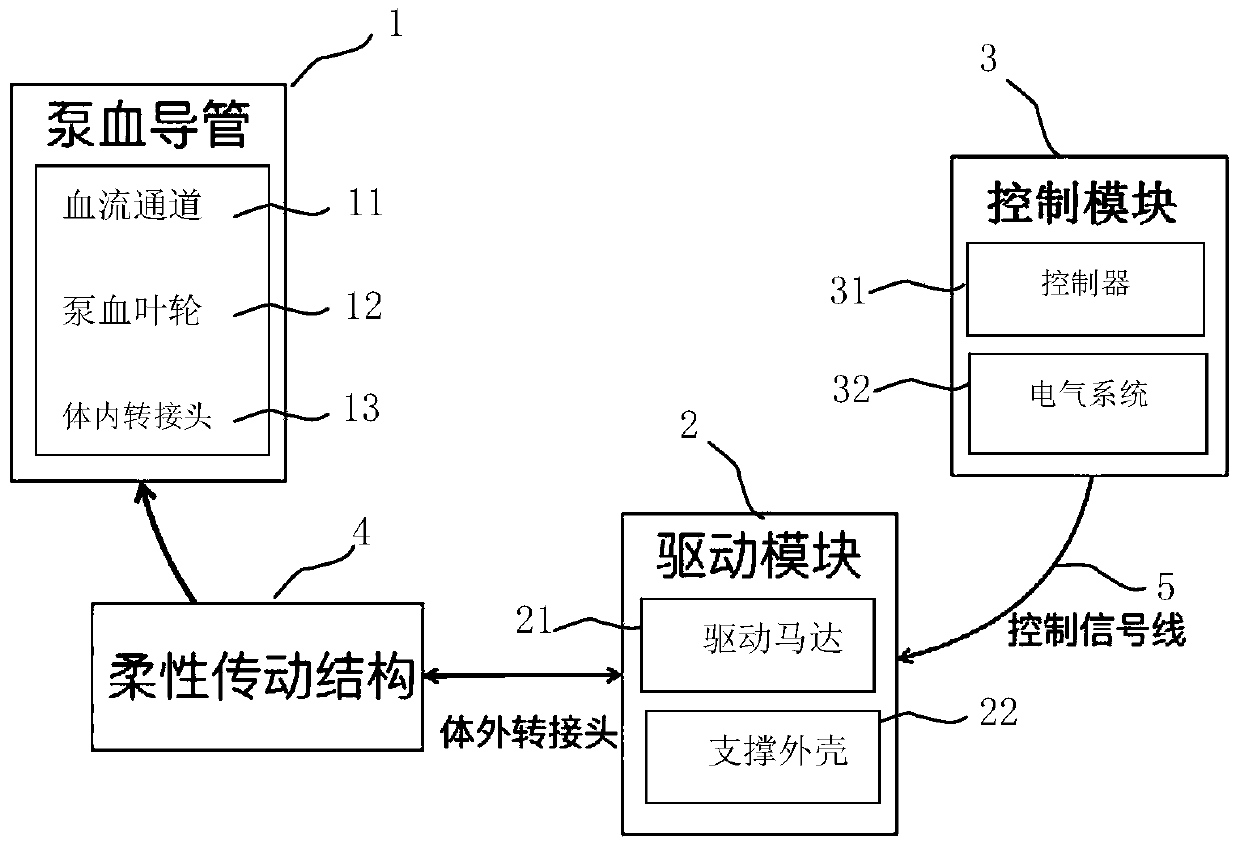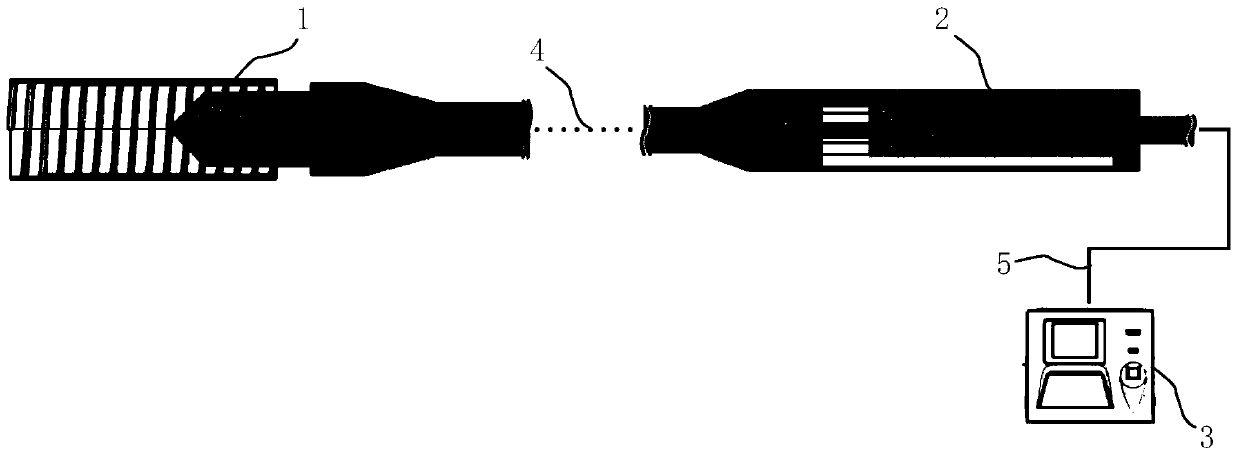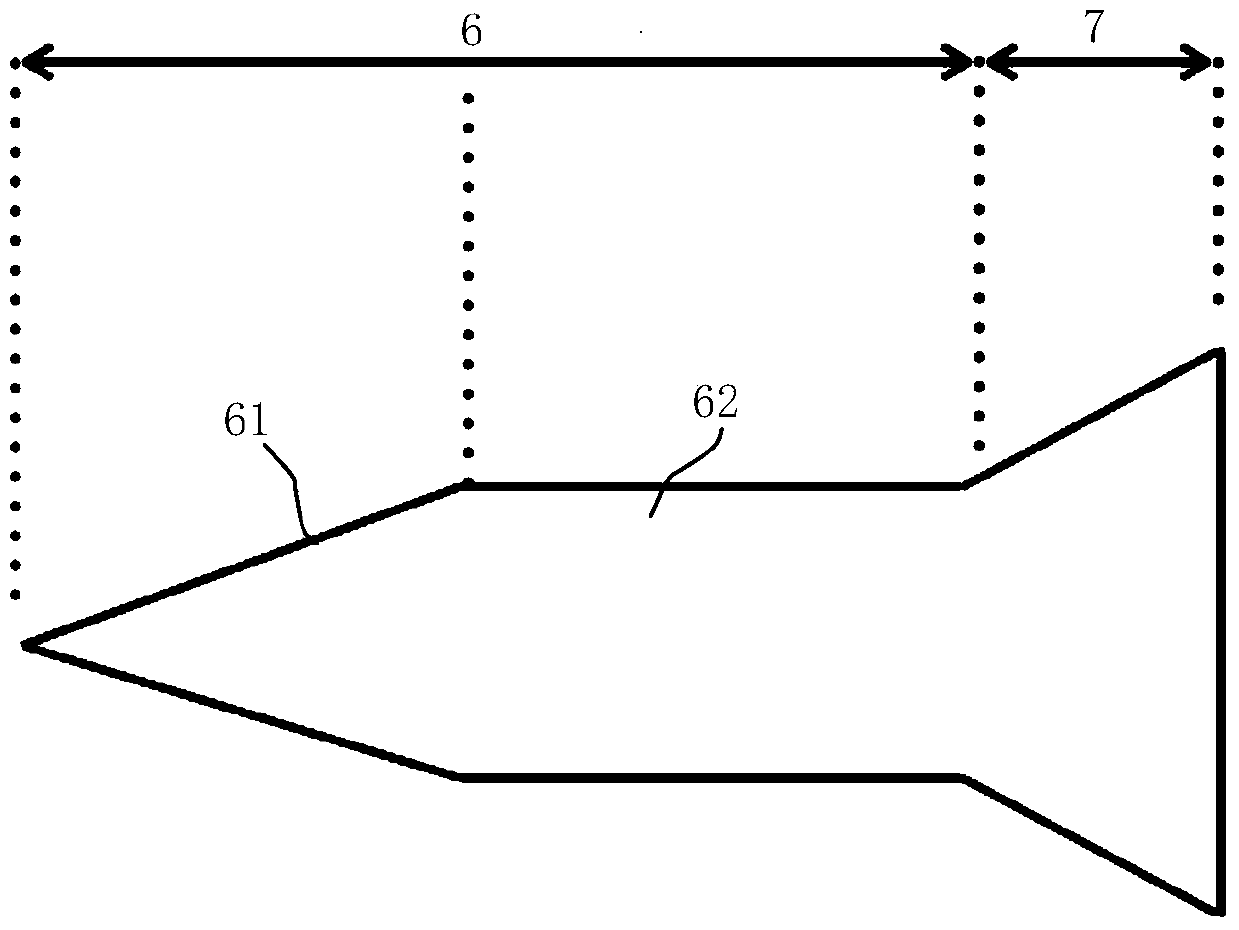Percutaneous Assisted Pumping Device
An auxiliary pump and blood pumping technology, which is applied in the direction of blood pumps, hypodermic injection devices, and other medical devices, can solve the problems of high cost, complex and compact internal structure of miniaturized motors, and inability to operate stably, achieving effective structure and reducing The difficulty of surgical implantation and the effect of reducing the risk of use
- Summary
- Abstract
- Description
- Claims
- Application Information
AI Technical Summary
Problems solved by technology
Method used
Image
Examples
Embodiment 1
[0056] The driving motor 21 adopts an electric motor, and the control module 3 provides driving signals and power to the driving module 2, and the driving module 2 feeds back the operating state of the motor, such as the rotor speed and current to form a closed-loop control; the control module 3 adopts an embedded hardware platform, equipped with The operating system can monitor the operation of the system through the human-computer interface, including the operating status of the drive module 2 and the auxiliary blood pumping flow rate of the blood pumping catheter 1 . The embedded controller 31 is driven by an AC power supply, and provides DC power to the driving module 2 and the blood pumping catheter 1 at the same time. The drive module 2 is connected to the control module 3 through the signal line 5 , and the near end of the signal line 5 is a quick connector, which is connected to the signal port on the controller 31 . The controller 31 provides driving power and control...
Embodiment 2
[0058] The drive motor 21 adopts an air motor, and the support shell 22 also includes an additional speed measuring structure, exhaust structure and noise reduction structure. The control module 3 outputs a control signal to the drive module 2 to control the output pressure of the air source to control the speed of the steam turbine. , and at the same time, the speed measurement structure feeds back the actual speed of the steam turbine to form a closed-loop control. In this embodiment, the driving module 2 is composed of a driving steam wheel, an air source, a solenoid valve, a speed measuring structure and a noise reducing structure. The air source provides driving power, and the controller 31 controls the air supply pressure of the air source by controlling the solenoid valve switch to adjust the speed of the steam turbine. The structure is connected with the flexible transmission structure 4 to drive the blood pumping impeller 12 in the blood pumping catheter 1 to realize ...
Embodiment 3
[0060] In this embodiment, the 4mm micro blood pump impeller adopts the ratio of axial flow section to oblique flow section of 6:1, the hub ratio of 0.4, three-stage continuous blades with blade angles of 30°, 60°, and 85°, and the oblique flow section The ratio to the length of the outflow window is 1:1. Under the pressure difference condition of 60mmHg in the CFD simulation, 30,000 rpm, 40,000 rpm, and 50,000 rpm can achieve pump blood flow rates of 1.0L / min, 2.5L / min, and 3.5L / min, respectively.
[0061] Under the same impeller specifications and CFD simulation conditions, a control impeller with a traditional axial flow structure hub and a single 60° axial flow blade, but with a diagonal flow section and a gradually changing hub to form a rear expansion section, at 30,000 rpm, 40,000 rpm, and 50,000 rpm The rpm can realize the pump blood flow of 0.5L / min, 1.0L / min, and 2.0L / min respectively.
[0062] Under the same impeller specifications and CFD simulation conditions, a ...
PUM
 Login to View More
Login to View More Abstract
Description
Claims
Application Information
 Login to View More
Login to View More - R&D
- Intellectual Property
- Life Sciences
- Materials
- Tech Scout
- Unparalleled Data Quality
- Higher Quality Content
- 60% Fewer Hallucinations
Browse by: Latest US Patents, China's latest patents, Technical Efficacy Thesaurus, Application Domain, Technology Topic, Popular Technical Reports.
© 2025 PatSnap. All rights reserved.Legal|Privacy policy|Modern Slavery Act Transparency Statement|Sitemap|About US| Contact US: help@patsnap.com



